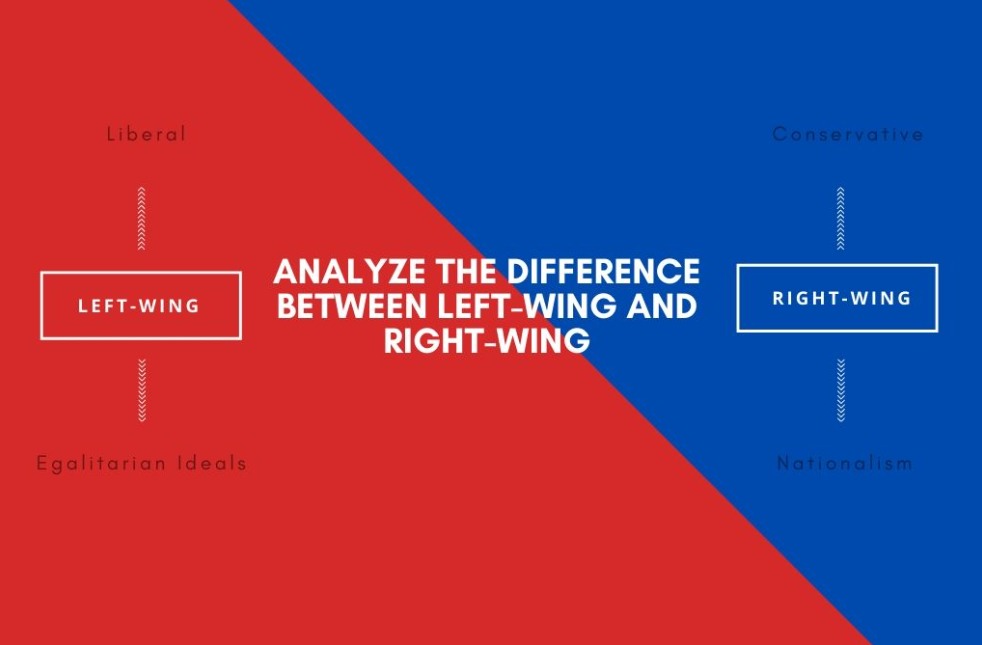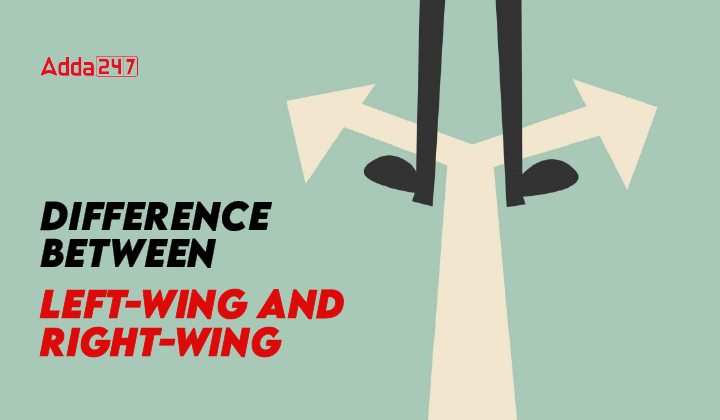Table of Contents
Left Wing and Right Wing represent two fundamentally different ideological viewpoints that significantly shape political beliefs and policies. Grasping the distinction between Left Wing and Right Wing is essential for navigating and understanding political environments. The Left Wing champions progressive and liberal ideologies, promoting social equality and advocating for substantial government involvement in achieving this goal. On the other hand, the Right Wing values traditional principles, focusing on individual freedoms and advocating for minimal government interference.
Difference Between Left-Wing and Right-Wing
Left-wing ideologies prioritize social equality and advocate for government intervention to address economic disparities, while right-wing ideologies emphasize individual liberty and favor limited government involvement in both economic and social spheres.
| Aspect | Left-Wing | Right-Wing |
| General Outlook | Embraces a liberal approach, focusing on progress, equality, and social reforms. |
Leans towards conservatism, prioritizing tradition, authority, and national identity.
|
| Economic Policies | Supports reducing income inequality through higher taxes on the wealthy and increased government spending on social programs and infrastructure. |
Favours lower taxes, minimal regulation of businesses, and limited government intervention in the economy.
|
| Role of Government | Advocates for a larger government role in society to ensure welfare and equality. |
Believes in minimal government involvement, emphasizing individual rights and civil liberties.
|
| Key Values | Highlights equality, fraternity, progress, and social reform. |
Values authority, hierarchy, tradition, and nationalism.
|
| Nationalism | Focuses on social equality and popular sovereignty, often aligning with national liberation movements. |
Derives legitimacy from cultural identity, including language and traditions, emphasizing Romantic Nationalism.
|
| Religion and State | Generally supports the separation of church and state, advocating for secularism. |
Often finds support among those who believe religion should have a more significant role in society.
|
| Populism | Populist left-wing movements emphasize egalitarian ideals without excluding groups horizontally. |
Right-wing populism appeals to the “ordinary people” who feel their concerns are disregarded, often emphasizing a unified national identity.
|
| Historical Origins | Originated during the French Revolution, where anti-monarchy revolutionaries sat on the left side of the assembly. |
Emerged during the French Revolution, with monarchy supporters seated on the right side of the National Assembly.
|

What is Left Wing?
Left-wing ideologies typically prioritize social equality, advocating for government intervention to address economic disparities and ensure the welfare of marginalized groups. They emphasize concepts like social justice, environmental sustainability, and collective responsibility.
- Social Equality: Left-wing ideologies advocate for reducing social and economic disparities among individuals and groups in society.
- Egalitarianism: They promote the idea that all people should have equal opportunities and rights, regardless of their background or socioeconomic status.
- Government Intervention: Left-wing policies often involve substantial government intervention in economic and social affairs to address inequality and promote the common good.
- Workers’ Rights: They prioritize protecting the rights of workers, including fair wages, safe working conditions, and the right to unionize.
- Social Justice: Left-wing movements aim to address injustices and discrimination based on factors such as race, gender, sexual orientation, and disability.
- Redistribution of Wealth: They support policies aimed at redistributing wealth and resources more equitably, often through progressive taxation and social welfare programs.
- Universal Services: Left-wing ideologies advocate for universal access to essential services such as healthcare, education, and housing, often provided or heavily subsidized by the government.
- Environmental Protection: Many left-wing movements prioritize environmental sustainability and advocate for policies to address climate change and protect natural resources.
- Peace and International Cooperation: Left-wing perspectives often emphasize diplomacy, peacebuilding, and cooperation among nations to address global issues and conflicts.
- Diversity and Inclusion: They value diversity and inclusivity, striving to create societies where all individuals are respected and have the opportunity to thrive regardless of their background.
What is Right Wing?
The term “Right Wing” refers to a political ideology or position that generally emphasizes traditional values, free-market principles, and limited government intervention in economic and social affairs. Here are the key points about right-wing ideology:
- Individual Liberty: Right-wing ideologies prioritize individual freedom and autonomy, emphasizing personal responsibility and limited government interference in people’s lives.
- Free Market: They advocate for free-market principles, such as minimal regulation, low taxes, and private enterprise, believing that economic prosperity is best achieved through competition and entrepreneurship.
- Traditional Values: Right-wing perspectives often uphold traditional social values and institutions, such as marriage, family, and religious institutions, viewing them as essential for social stability and cohesion.
- Nationalism: Right-wing movements often emphasize patriotism and national identity, advocating for policies that prioritize the interests of their nation over international concerns.
- Law and Order: They prioritize maintaining law and order in society, often advocating for strong criminal justice systems and strict enforcement of laws to ensure public safety and security.
- Limited Government: Right-wing ideologies generally support limited government intervention in both the economy and personal freedoms, believing that excessive government involvement can lead to inefficiency and infringement on individual rights.
- Fiscal Conservatism: They typically advocate for fiscal responsibility and balanced budgets, opposing excessive government spending and high levels of taxation.
- Defence of Private Property: Right-wing perspectives emphasize the protection of private property rights, viewing property ownership as a fundamental aspect of individual freedom and economic prosperity.
- Social Hierarchy: Some right-wing ideologies may accept or even promote social hierarchy, believing that certain individuals or groups naturally hold higher status or authority in society.
- Scepticism of Social Welfare: While not universal among all right-wing ideologies, some are skeptical of extensive social welfare programs, arguing that they can create dependency and discourage self-reliance.




 TSPSC Group 1 Question Paper 2024, Downl...
TSPSC Group 1 Question Paper 2024, Downl...
 TSPSC Group 1 Answer key 2024 Out, Downl...
TSPSC Group 1 Answer key 2024 Out, Downl...
 UPSC Prelims 2024 Question Paper, Downlo...
UPSC Prelims 2024 Question Paper, Downlo...





